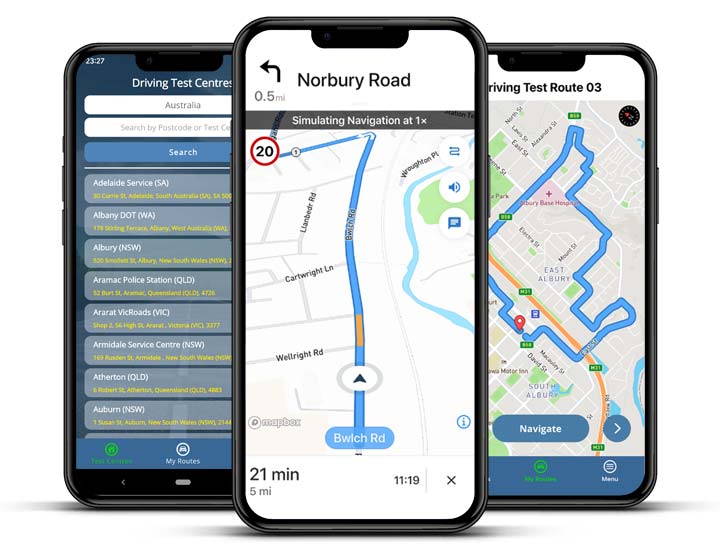Online Driver Knowledge Test Practice


Effects of alcohol, illegal drugs and medications on driving ability and legal limits.

Safe driving practices, hazard perception, rest breaks, and managing tiredness.

Seat belt laws, child restraint requirements, and correct usage for all passengers.

Minimum passing distances, road-sharing rules, and safe behaviour around cyclists.

Give way rules, roundabouts, T-intersections, traffic signals and railway crossings.

Give way rules, roundabouts, T-intersections, traffic signals and railway crossings.

Overtaking laws, safe following distances, turning behaviour and high-risk driving.

Driver responsibilities around pedestrians, school crossings and shared zones.

Default speed limits, variable zones, shared areas, and speed-related penalties.

Warning signs, regulatory signs, guide signs and temporary roadworks signage.

Legal consequences of misconduct during the testing process including bribery.

Core driving rules, licensing requirements, parking laws and emergency procedures.
The Driver Knowledge Test (DKT) is the first step on the journey to getting your C class (car) learner licence in New South Wales. It’s a multiple-choice test that takes 30-45 minutes to complete, that will confirm your understanding of the road rules, signs, and safe driving behaviours.
| Section | Number of Questions | Pass Mark |
|---|---|---|
| General Knowledge | 15 | At least 12 correct |
| Road Safety (including signs & behaviour) | 30 | At least 29 correct |
The online DKT is an interactive course and test that you can complete at your own pace from home or any location with internet access. It includes practice tests and quizzes to help you prepare.
Though the official pass rates aren’t published, it’s estimated that around 30–40% of learners fail on their first attempt.
You’ll need to book the test at a Service NSW centre. There are testing locations across the state, including:
Important: You will need to book in advance and bring the correct ID along (usually a combination of documents like a Medicare card and a school ID or passport).
